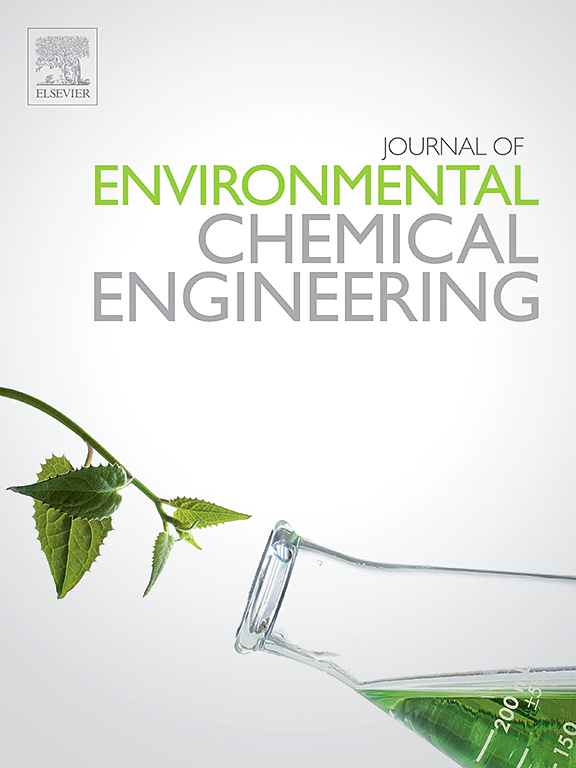Recent advances in Per- and polyfluoroalkyl substances removal: Technologies, mechanisms and future prospects
IF 7.4
2区 工程技术
Q1 ENGINEERING, CHEMICAL
引用次数: 0
Abstract
Per- and polyfluoroalkyl substances (PFASs), as " forever chemicals", their high chemical stability and environmental persistence characteristics, can cause persistent hazards to ecosystems and human health through bioaccumulation. However, the existing PFASs removal technologies (such as physical adsorption, chemical oxidation/reduction, biodegradation, etc.) still face bottleneck problems such as low efficiency, long reaction cycle, and high cost and energy consumption. Furthermore, there are significant gaps in the lack of comparison of different technologies at the cost and energy levels. This paper systematically sorts out the core mechanisms and parameters of mainstream technologies. While focusing on analyzing the mechanisms, material properties and influencing factors of different methods, it also focuses on the energy consumption/cost-efficiency balance of different technologies, and evaluates the feasibility and limitations of various technologies for removing PFASs. The aim is to explore the comprehensive performance of PFASs removal technology through a multi-dimensional evaluation. Finally, looking forward to future research directions, including the development of new and highly efficient catalysts, promoting microbial-chemical coupling processes, and advocating the development of dual-functional detection-removal integrated material technologies and equipment, to help build a safe and efficient PFASs green governance system and promote the development of environmental remediation technologies towards economic sustainability.
全氟和多氟烷基物质去除的最新进展:技术、机制和未来展望
全氟和多氟烷基物质(PFASs)作为“永远的化学品”,具有高度的化学稳定性和环境持久性,可通过生物积累对生态系统和人类健康造成持续危害。然而,现有的PFASs去除技术(如物理吸附、化学氧化/还原、生物降解等)仍面临效率低、反应周期长、成本和能耗高等瓶颈问题。此外,在缺乏对不同技术在成本和能源水平上的比较方面存在重大差距。本文系统梳理了主流技术的核心机理和参数。在重点分析不同方法的机理、材料性能及影响因素的同时,重点分析了不同技术的能耗/成本效益平衡,评价了各种技术去除PFASs的可行性和局限性。目的是通过多维度评价,探索PFASs去除技术的综合性能。最后,展望了未来的研究方向,包括开发新型高效催化剂、推动微生物-化学耦合过程、倡导开发双功能检测-去除一体化材料技术和设备,以帮助构建安全高效的全氟磺酸绿色治理体系,推动环境修复技术朝着经济可持续的方向发展。
本文章由计算机程序翻译,如有差异,请以英文原文为准。
求助全文
约1分钟内获得全文
求助全文
来源期刊

Journal of Environmental Chemical Engineering
Environmental Science-Pollution
CiteScore
11.40
自引率
6.50%
发文量
2017
审稿时长
27 days
期刊介绍:
The Journal of Environmental Chemical Engineering (JECE) serves as a platform for the dissemination of original and innovative research focusing on the advancement of environmentally-friendly, sustainable technologies. JECE emphasizes the transition towards a carbon-neutral circular economy and a self-sufficient bio-based economy. Topics covered include soil, water, wastewater, and air decontamination; pollution monitoring, prevention, and control; advanced analytics, sensors, impact and risk assessment methodologies in environmental chemical engineering; resource recovery (water, nutrients, materials, energy); industrial ecology; valorization of waste streams; waste management (including e-waste); climate-water-energy-food nexus; novel materials for environmental, chemical, and energy applications; sustainability and environmental safety; water digitalization, water data science, and machine learning; process integration and intensification; recent developments in green chemistry for synthesis, catalysis, and energy; and original research on contaminants of emerging concern, persistent chemicals, and priority substances, including microplastics, nanoplastics, nanomaterials, micropollutants, antimicrobial resistance genes, and emerging pathogens (viruses, bacteria, parasites) of environmental significance.
 求助内容:
求助内容: 应助结果提醒方式:
应助结果提醒方式:


